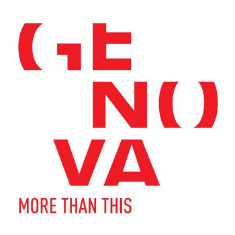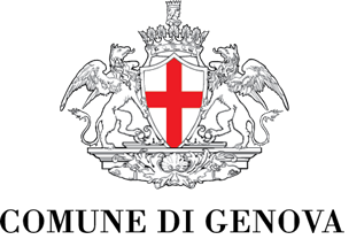Click here to view image
Madonna and Child between St Catherine of Alexandria and St Nicholas, saints and donators
1892 Genova - deposito
Agocchiari, Barnaba detto da Modena
triptych
1376 - 1400 - XIV
PB 1739
Unità di misura: cm; Altezza: 174; Larghezza: 147
tempera su tela incollata su tavola di pioppo
ESPOSIZIONE ARTISTICO ARCHEOLOGICO INDUSTRIALE APERTA NELLE SALE DELL'ACCACEMIA LIGUSTICA - GENOVA - 1868<br>IL DIPINTO E IL SUO ROVESCIO. PROPOSTA DI LETTURA PER DIPINTI A SUPPORTO LIGNEO DELLA GALLERIA DI PALAZZO BIANCO - GENOVA - 1986<br>EL SIGLO DE LOS GENOVESES E UNA LUNGA STORIA DI ARTE E SPLENDORI NEL PALAZZO DEI DOGI - GENOVA - 1999
Previously attributed to the workshop of Barnabas of Modena or to an anonymous artist, the painting is today unanimously included in the corpus of works by the Modenese artist, as attested by the inscription on the lower part of the central panel. During the restoration in 1985, it was not possible to recover the date of execution (Tagliaferro 1991, p. 64). In this regard, Franco Pesenti considers the work to have been executed around 1370, while Giuliana Algeri, Laura Tagliaferro and Clario Di Fabio have postponed the dating by about a decade. The latter, in fact, identify the two donors represented in the side panels as Doge Nicolò Guarco and his wife Lina di Francesco Onza d'Oro di Coronata (Pesenti 1987, p. 56; Algeri 1991, pp. 90-91; Tagliaferro 1991, pp. 64-65; Di Fabio 1999, p. 62). The polyptych comes from the Church of St. James and St. Philip, for which it was probably intended by the patrons, as confirmed by the presence of a Dominican saint, St. Catherine of Alexandria, the patron saint of the Dominicans, and St. Nicholas of Bari, whose arm was kept in the Genoese convent. The identification of the two saints depicted in the side cusps is problematic. According to Laura Tagliaferro, the Dominican saint could be Margaret of Hungary, St. Agnes of Montepulciano or St. Catherine of Siena, while Giuliana Algeri and Clario Di Fabio propose for the first hypothesis. The saint on the left cusp is instead variously identified as a virgin from the retinue of Saint Ursula, as Saint Margaret of Antioch or generically as a martyr saint (Algeri, 1991, pp. 90-91; Tagliaferro 1991, p. 65; Di Fabio 1999, p. 62). The altarpiece is divided into three compartments, centred, lobed and surmounted by cusps with small columns. In the central compartment, the Madonna and Child is depicted. The Virgin, turned three-quarter to the left and looking towards the observer, is wearing a dark red robe and a blue cloak, the inner part of which can be glimpsed in gold; a transparent veil encircles her head and falls over her breast, forming a wimple. She wraps the Child with her right arm and holds him with her other hand. Jesus, dressed in a pink tunic edged at the hem with a gold chevron, caresses a goldfinch resting on his left arm with his right hand. At the bottom, an inscription in gold letters reads: “BARNABAS DE MUTINA PINXIT...”. In the right-hand compartment St. Nicholas of Bari is depicted standing in bishop's robes, facing the Madonna and Child. The saint holds a book in his left hand and a crosier in his right. At his feet kneels the donor, depicted in profile with clasped hands, wearing red robes and a headdress of the same colour. In the cusp above, a crowned martyr saint is facing the central cusp, with clasped hands wearing a pink dress and cloak. In the left compartment, Saint Catherine of Alexandria holds the palm of martyrdom in her right hand and an open book in her left. The veiled saint wears a blue dress with four buttons on her chest and a pink mantle edged with gold. At her feet is the donatrix, a kneeling young woman with blond hair, wearing a red dress, a red and gold mantle and clasped hands; she is also facing the central panel. Above, a Dominican saint holds a crucifix in her left hand and a heart in her other hand; her gaze is turned towards the central pinnacle where Christ crucified, the Madonna and St. John the Evangelist are represented. The latter, wearing a blue robe and pink cloak, is kneeling beside the cross with his torso bent forward. On the opposite side, the Madonna, with her forehead covered by her cloak, is seated and has her head turned to the left. She points with her right hand to Christ, represented with a white loincloth and head reclined towards the right shoulder, nailed to a cross with a suppedaneum at the bottom and a scroll at the top.



